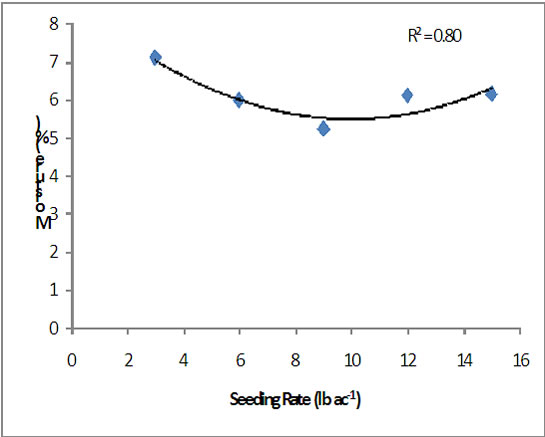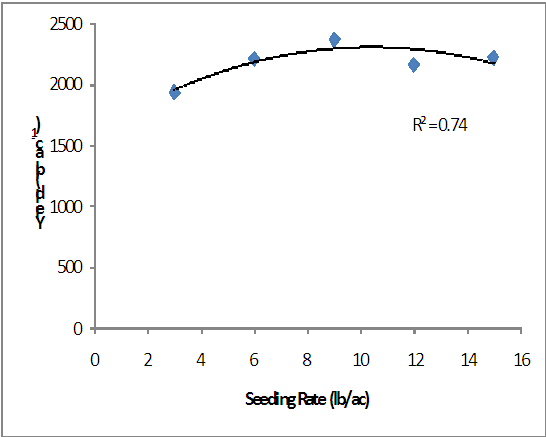Canola Seeding Rate Trial Update
go.ncsu.edu/readext?277020
en Español / em Português
El inglés es el idioma de control de esta página. En la medida en que haya algún conflicto entre la traducción al inglés y la traducción, el inglés prevalece.
Al hacer clic en el enlace de traducción se activa un servicio de traducción gratuito para convertir la página al español. Al igual que con cualquier traducción por Internet, la conversión no es sensible al contexto y puede que no traduzca el texto en su significado original. NC State Extension no garantiza la exactitud del texto traducido. Por favor, tenga en cuenta que algunas aplicaciones y/o servicios pueden no funcionar como se espera cuando se traducen.
Português
Inglês é o idioma de controle desta página. Na medida que haja algum conflito entre o texto original em Inglês e a tradução, o Inglês prevalece.
Ao clicar no link de tradução, um serviço gratuito de tradução será ativado para converter a página para o Português. Como em qualquer tradução pela internet, a conversão não é sensivel ao contexto e pode não ocorrer a tradução para o significado orginal. O serviço de Extensão da Carolina do Norte (NC State Extension) não garante a exatidão do texto traduzido. Por favor, observe que algumas funções ou serviços podem não funcionar como esperado após a tradução.
English
English is the controlling language of this page. To the extent there is any conflict between the English text and the translation, English controls.
Clicking on the translation link activates a free translation service to convert the page to Spanish. As with any Internet translation, the conversion is not context-sensitive and may not translate the text to its original meaning. NC State Extension does not guarantee the accuracy of the translated text. Please note that some applications and/or services may not function as expected when translated.
Collapse ▲by Chris Reberg-Horton and Carrie Brinton, NC State University
Canola is a fairly new and promising crop to North Carolina. There is market demand for organic canola, and organic farmers are looking to diversify their crop rotation. We planted 3 canola varieties at 5 seeding rates – 3, 6, 9, 12 and 15 lb/acre. Conventional seeding rates are typically between 3 and 6 lbs per acre. A major concern for organic producers is weed management so our bias is often to use as much seed as possible to aid competition with weeds. Our goal was to investigate whether higher seeding rates led to negative consequences such as higher disease pressure due to less airflow or increased lodging. No pre- or post-herbicides were applied during the growing season; however, we did use a desiccant at harvest in Salisbury to prevent shattering until we could arrive with the combine. This study was planted at Cherry Research Farm in Goldsboro, NC and Piedmont Research Station in Salisbury, NC. Information here is from only one year of research. Please use caution when using this information.
Table 1. Field management throughout the season.
|
Goldsboro, NC |
Salisbury, NC |
|||
|
Date |
Rate |
Date |
Rate |
|
| Planting Dates |
November 2, 20101 |
|
September 20, 2010 |
|
| Fall N (lb/A) |
November 20, 2010 |
32 |
– |
* |
| Spring N (lb/A) |
February 28, 2011 |
83 |
February 18, 2011 |
58 |
| Spring S (lb/A) |
February 17, 2011 |
26 |
February 18, 2011 |
17 |
| Stand Counts |
March 9, 2011 |
|
March 7, 2011 |
|
| Dessicated with Paraquat |
– |
– |
June 2, 2011 |
1 |
| Harvest |
June 3, 2011 |
|
June 20, 2011 |
|
| *No pre-plant N was applied in Salisbury because these fields receive dairy lagoon waste on a regular basis. Experience has proven that fall N applications tend to cause lodging in crops. | ||||
Table 2. Harvest data for seeding rates across all varieties.
|
Goldsboro, NC |
Salisbury, NC |
||||||||
|
Rate |
Moisture |
Yield* |
Yield** |
Test Weight |
Moisture |
Yield* |
Yield** |
Test Weight |
|
|
% |
lb/ac |
bu/ac |
lb/bu |
% |
lb/ac |
bu/ac |
lb/bu |
||
|
3 |
7.12 |
1933 |
32 |
54.4 |
4.32 |
3981 |
66 |
56.1 |
|
|
6 |
5.98 |
2215 |
37 |
58.6 |
3.78 |
4145 |
69 |
55.9 |
|
|
9 |
5.21 |
2377 |
40 |
58.5 |
5.28 |
4267 |
71 |
56.8 |
|
|
12 |
6.11 |
2167 |
36 |
55.3 |
4.37 |
3961 |
66 |
55.8 |
|
|
15 |
6.13 |
2227 |
37 |
57.5 |
4.11 |
4045 |
67 |
55.4 |
|
|
ANOVA |
———————————————— Prob > F —————————————————- |
||||||||
| rate |
0.12 |
0.10 |
NS |
NS |
NS |
NS |
NS |
||
|
linear |
0.25 |
.14 |
|
|
|
|
|
|
|
|
quadratic |
0.03 |
.06 |
|
|
|
|
|
|
|
* Yield data corrected to 8.5% moisture.
**Yield calculated at 60 lb/bushel.
Seed size varies among these varieties. Flash has much smaller seed than Virginia, with 33% more seed per pound. Hornet is also smaller than Virginia, although only 12% more seed per pound.
The canola crop in Salisbury reached growth stage 2.6 – 2.7 before the first night at 25°F in early November. The Goldsboro site was originally planted in mid-October, but due to problems with the planter, needed to be replanted. There were a couple nights at 31°F shortly after planting, but temperatures did not fall below 25°F until 5-WAP.
Moisture – There was no significant moisture difference among varieties or seeding rates in Salisbury where we applied Paraquat to desiccate the crop prior to harvest. However, in Goldsboro, where desiccant was not applied, moisture differences were observed across seeding rates. The lowest moisture was at the 9 lb/ac seeding rate, while the highest moisture was at the lowest seeding rate. At the lowest seeding rate we observed late emerging branches that filled in the light gaps in the canopy. The late branches were greener at harvest than the bulk of the crop and likely contributed to the higher moistures.
In Goldsboro, a small difference in moisture due to variety (p = 0.07, data not presented) was detected.
We did not collect data on varietal maturity, but visual observation at both locations throughout the spring indicated Virginia flowered first and dried down earlier, while Flash was still a bit green when we harvested. Data from the 2009 National Winter Canola Variety Trial showed maturity of Virginia, Flash and Hornet all within 6 days of each other at the Virginia, Georgia and Alabama locations.
Yield – No varietal differences were detected. No significant differences were observed in yield across seeding rates in Salisbury, however there were significant differences in Goldsboro. In Goldsboro, there was a large yield gap between the lowest seeding rate and all the other seeding rates. The 9 lb/acre seeding rate produced the highest yields at both locations. Yields were higher at Salisbury for each seeding rate, 44% – 51% greater than Goldsboro.
y-axis: moisture (%)

y-axis: Yield (bu/acre)

Conclusions
So far we have seen no evidence that higher seeding rates are a problem for diseases or lodging. However, this is only one year of data and disease pressures were low on winter crops this year. Extreme caution is needed with one year of data, but so far 9 lbs of seed appears to be an appropriate seeding rate. We are attempting to plant this study on weedy sites this year to do a better job of quantifying the impact increased seeding rates has on weed control.
This project has been generously funded by the NC Tobacco Trust Fund Commission.
Any opinion, finding, conclusion, or recommendations expressed in this publication are those of the author(s) and do not necessarily reflect the view and policies of the North Carolina Tobacco Trust Fund Commission.


